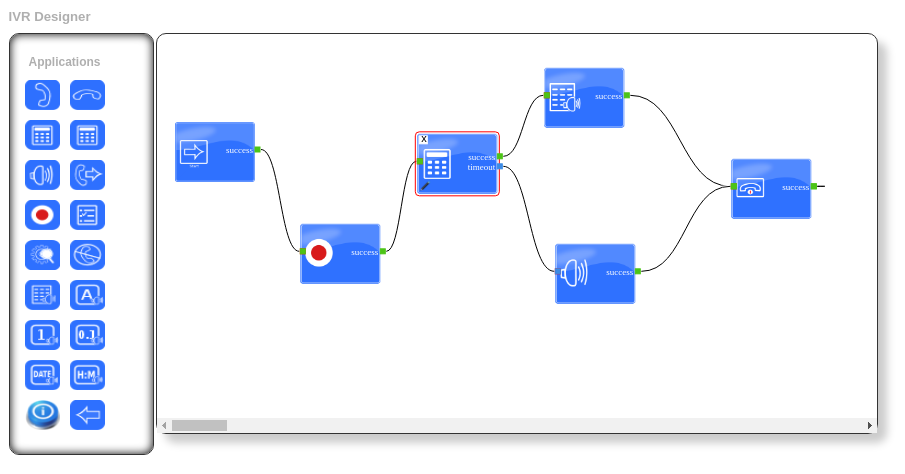In today’s fast-paced business environment, delivering exceptional customer support has become a critical factor for companies aiming to maintain a competitive edge. With continuous technological advancements, innovations in contact center software have become pivotal in transforming how organizations engage with their customers.
The era of traditional call centers with limited functions is a thing of the past. Modern contact center software now offers a vast range of advanced features and capabilities, enabling businesses to provide personalized, efficient, and seamless customer experiences across multiple communication channels. These advancements are reshaping the future of customer support, equipping organizations to meet the growing demands and expectations of today’s consumers.
Exploring the Essentials of Contact Center Software:
Contact center software is a robust solution that allows organizations to manage customer interactions with greater efficiency. It integrates a variety of tools and features, such as automatic call distribution (ACD), interactive voice response (IVR), workforce management, quality monitoring, analytics, and more. These software solutions are crafted to optimize communication channels, boost agent productivity, and provide personalized customer experiences.
Essential Features of Contact Center Software:
Automatic Call Distribution (ACD):
ACD is a fundamental feature of contact center software that intelligently directs incoming calls to the most suitable agent based on specific criteria like agent skills, availability, and customer priority. This functionality ensures that customers are promptly connected to the right agent, minimizing wait times and enhancing first call resolution rates.
Interactive Voice Response (IVR):
IVR systems enable customers to interact with an automated system via voice or keypad inputs, offering self-service options for common inquiries or transactions. This reduces the workload on agents, allowing them to focus on more complex issues. Additionally, IVR systems gather valuable customer information, minimizing the need for agents to collect basic details during interactions.

Omnichannel Support:
Contact center software facilitates the seamless integration of various communication channels, including voice, email, chat, social media, and SMS. This allows customers to engage with businesses through their preferred channels, while agents can view all customer interactions in a unified interface, ensuring consistent and personalized experiences.
Workforce Management:
Contact center software incorporates workforce management tools that help forecast customer demand, create optimal staffing schedules, and monitor agent performance. These features enable contact center managers to optimize resource allocation, maintain service levels, and ensure agents adhere to their schedules.
Quality Monitoring and Analytics:
The software offers real-time monitoring and recording capabilities to assess agent performance, pinpoint areas for improvement, and provide targeted coaching and training. Advanced analytics tools offer insights into customer behavior, trends, and operational metrics, empowering organizations to make data-driven decisions.
Advantages of Contact Center Software:
Improved Operational Efficiency:
Contact center software enhances operational efficiency by streamlining processes, automating repetitive tasks, and optimizing resource allocation. Features like ACD and IVR ensure effective call routing and provide self-service options, reducing agent idle time and shortening call handling durations. This leads to increased productivity and lower operational costs.
Enhanced Customer Experience:
Organizations can deliver personalized and consistent experiences across all communication channels with contact center software. Omnichannel support allows customers to seamlessly switch between channels without losing context, while intelligent routing directs them to the most qualified agent. Additionally, self-service options empower customers to resolve queries quickly, boosting customer satisfaction.
Boosted Agent Performance:
Contact center software equips agents with easy access to customer information, past interactions, and real-time guidance, enabling them to offer more efficient and personalized service. Quality monitoring and analytics tools help pinpoint training needs and areas for improvement, leading to better agent performance and increased job satisfaction.
Scalability and Flexibility:
These software solutions are highly scalable, allowing businesses to adapt to changing customer demands and easily expand their operations. Cloud-based contact center software offers flexibility, enabling agents to work remotely and ensuring business continuity even during challenging times.
Enhanced Analytics and Reporting:
Contact center software provides powerful analytics and reporting capabilities, enabling businesses to measure and track key performance indicators (KPIs), agent performance, customer satisfaction levels, and trends. These insights support data-driven decision-making, process optimization, and the identification of areas for improvement.
Conclusion:
Contact center software has become an essential asset for businesses looking to improve operational efficiency and elevate customer satisfaction. With powerful features like automatic call distribution, interactive voice response, omnichannel support, and advanced analytics, these solutions enable organizations to streamline communication processes, optimize resources, and provide personalized customer experiences. Investing in contact center software allows businesses across various industries to gain a competitive advantage, foster stronger customer relationships, and achieve sustained success.
Leveraging Open Source in ICT
